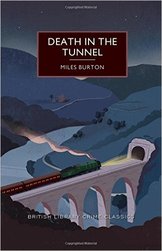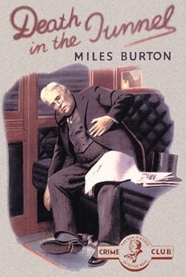
But why should a mystery story be required to carry a Great Idea? Why must it have something to say? Detective stories are almost by definition entertainments, plots constructed by the writer to engage and beguile the reader. Many of the Humdrum authors Symons singles out were extremely successful in their time: Freeman Wills Crofts, whose plots often involve railways and the use of timetables to make and break suspects’ alibis, and Major John Street, who wrote dozens of books under the pseudonyms John Rhode and Miles Burton, were both prolific and popular. Their focus on the puzzle did not limit their contemporary appeal.
It can also be argued that the shift from detective story to crime novel was not entirely a beneficial one. While many authors in later decades would deliver complex and haunting books that used antiheroes, modern crime, and psychology in a compelling way – Patricia Highsmith, Ruth Rendell, Nicolas Freeling, and Reginald Hill are all favorites of mine – here in America it feels like the genre has been swallowed up by endless tales of sociopathic serial killers, broken and vulnerable cops, amoral lawyers and as many fights within the justice system as outside of it. Michael Connelly and Jo Nesbo are excellent writers and craftsmen, but I can only visit their fictional worlds occasionally before the many cruelties and injustices within their pages start to weigh as heavily on me as they do on their weary detectives.
Treating the death of the wealthy magistrate as suspicious, other clues soon surface: Saxonby is found with his wallet and money still in his pocket, but a family member is certain that the wallet is a duplicate; the dead man had sent his secretary and niece away from the house the day before he took his last trip; and a mystery man named Yates (the name of Saxonby’s solicitor but definitely not that person) had met with Sir Wilfred in secret. Inspector Arnold finds details that consistently lead to an older man named Dredger, but Merrion feels like the man is being framed through impersonation and cunning, and expands his theories to include two culprits instead of one.

Thanks to NetGalley and the publishers at The Poisoned Pen Press for offering an advance eBook copy of Death in the Tunnel in exchange for an honest review.
 RSS Feed
RSS Feed